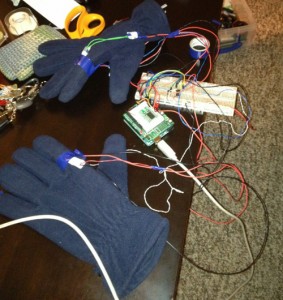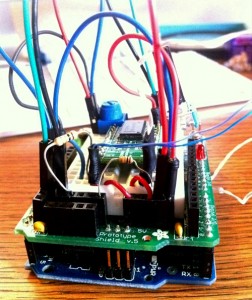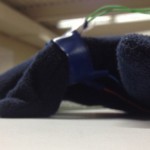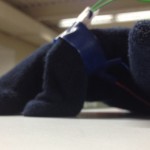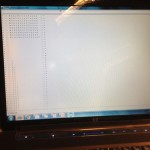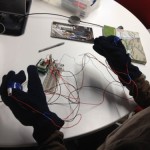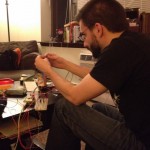The Concept
This Arduino prototype is based on one of my previous designs, the Airboard Gloves, with some slight modifications. With the Airboard Gloves, a user could type in the air and receive the same kind of feedback that he or she would if he or she were typing on a physical keyboard. With this prototype, the user must type on a flat surface, but can still type without the assistance of a keyboard.
How it works
This prototype uses force sensitive resistors (FSRs) to determine the angle of bend in a user’s finger. Since this is just a proof of concept prototype, we used 2 FSRs to measure the right and left index fingers and ignored the other fingers. As the user “types,” he or she moves his or her fingers across a virtual keyboard. When the FSRs detect that a finger has bent enough to transition between keys, the vibration motor attached to that finger vibrates, alerting the user to the change. When the user presses down with the tip of his or her finger, the virtual key associated with that finger position is typed and appears on the console. For this proof of concept, we only allowed each key to have 4 positions, limiting the keys that could be typed to 4, r, f, v, 7, u, j, and m.
Arduino Parts Used
- 2 Sparkfun Flex Sensors
- 2 Force Sensitive Resistors
- 1 Pair of Double-lined Gloves
- 1 Arduino + Bradboard + Prototyping Shield
- 1 NKCElectronics Logic Level Shifter
- 2 Vibration Motors
- 4 10kΩ Resistors
- 2 LEDs
Project Responsibilities
- Wrote the Arduino code for this prototype
- Assisted in the construction and design of the prototype and the Arduino configuration
- Calibrated and tested the prototype
Project Timeline
November 14 to December 5, 2011
Team Mate
Attributions
Thanks to Jeff Wain for allowing us to borrow his Logic Level Shifter (and for showing us how to use it).
The code we used to read from the FSR pressure pad was modified from code found here.
